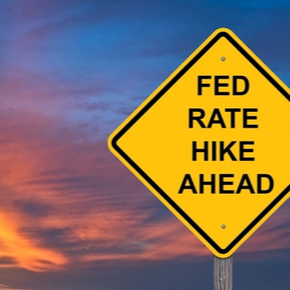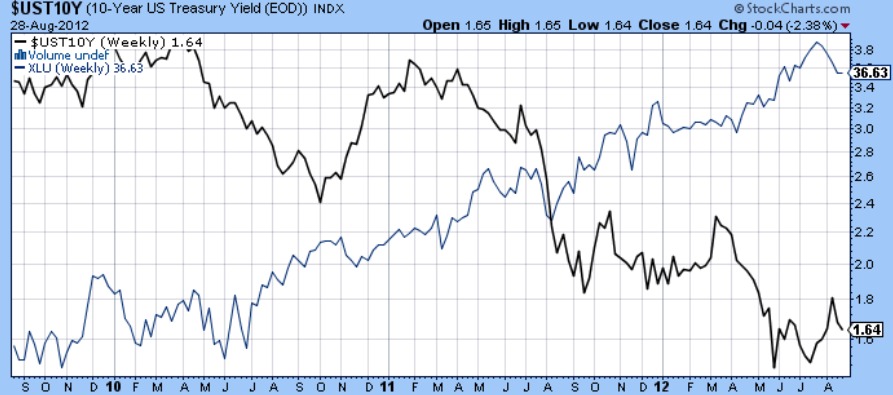Vahan Janjigian, Ph.D., CFA, Chief Investment Officer, Greenwich Wealth Management, LLC
As I mentioned in last month’s commentary, investors switched their focus from interest rate hikes and their impact on banks to the debt ceiling. Even though there was little doubt that politicians would eventually reach an agreement, there was serious concern about how close they would come to the edge of disaster. As it turns out, the answer was very close. Each day the markets teetered one way or the other to the most recent news about how negotiations were going. Stocks finally started rallying when news broke that the government would honor its obligations. The political turmoil, however, caused Fitch Ratings to place the United States on negative credit watch. This means that Fitch no longer believes that investors can completely ignore the risk of default.
Now that the debt ceiling has been raised, investors can turn their attention back to the Federal Reserve and interest rates. Some Fed officials continue to talk tough about the need to keep raising rates to fight inflation. Others have hinted that the Fed can pause at their next meeting on June 14 and then raise rates at the July 26 meeting. In my view, neither choice makes sense. I believe the Fed has done enough with interest rates and it should simply allow the previous hikes to work their way through the economy.
If you have ever taken a course in economics, you have no doubt studied the relationship between supply and demand. When supply and demand are in equilibrium, prices remain stable. But if demand increases or supply falls, prices will rise. For example, if consumers suddenly decide they want to eat more beef, the price of beef will rise – at least until ranchers can produce more beef to meet the increased demand. Similarly, if demand remains constant, but supply drops, perhaps because a drought has killed many cows, prices will rise until consumers decide to eat less beef or until the drought is over. The bottom line is that inflation happens when there is too much money chasing too few goods. This means that inflation can also result if the government doles out lots of money as it did during the pandemic.
The inflation we have been experiencing during the past 18 months or so is the result of both supply disruptions (caused by the pandemic and Russia’s war in Ukraine) and government handouts, which puts the Federal Reserve in a difficult place. Raising interest rates does nothing to improve supply disruptions. (Indeed, it could make them worse.) And raising interest rates puts the Fed in the uncomfortable position of having to counter the purpose of the government handouts.
I’m not saying the Fed should not have raised rates at all. They kept rates too low for too long so they should have raised interest rates to more normal levels. However, they raised rates too high and too fast. Instead, the Fed should have used a combination of interest rate hikes and balance sheet sales. Due to quantitative easing, the Fed’s balance sheet has ballooned from about $1 trillion at the start of the financial crisis in 2008 to $9 trillion at the start of 2022. The Fed knows it needs to reduce this number, but it hasn’t sold any assets. Instead, it is simply allowing existing assets to mature without replacing them. So far, the Fed’s plan has reduced the balance sheet by only about a half trillion dollars from the peak, which means there is still a long way to go.
Despite the Fed’s efforts to slow down the economy, the employment market continues to do well. On June 2, the Department of Labor released the Employment Situation report for May. Nonfarm payrolls increased by a much larger than expected 339,000. In the past, a better-than-expected number often resulted in a selloff in stocks due to fears that the Fed would continue to raise rates aggressively. However, the report also showed a large increase in the unemployment rate from 3.4% in April to 3.7% in May. Investors hoped this would convince the Fed to pause the rate hikes. Overall, the thinking was that the employment market may be slowing enough to satisfy the Fed, yet not too much to result in a recession. This is the best possible hoped-for outcome, often referred to as a soft landing, and it contributed to a huge rally in stocks last Friday.
You might be wondering how it is even possible for the unemployment rate to increase when there was a large increase in payrolls. The reason is because the Employment Situation report consists of two surveys.
The unemployment rate is derived from the Household Survey. Because there are approximately 120 million households in the United States, it isn’t feasible to survey everyone. As a result, this survey is limited to a sample size of about 60,000 households. Key questions include how many people are in the household, how many are working, and how many who are not working are looking for work? Based on the results of this relatively small sample, statisticians make inferences about the entire population. The unemployment rate is defined as the number of people who are estimated to be unemployed divided by the number of people who are estimated to be in the labor force. The unemployment rate in May increased because the number of people estimated to be unemployed increased by more than the number of people estimated to be in the labor force.
The second survey, from which we get the nonfarm payrolls figure, is called the Establishment Survey. This survey includes approximately 122,000 businesses and government agencies. Again, this is just a small sample of the estimated six million businesses in the United States that have at least one paid employee. Furthermore, there are thousands of federal, state, and local government agencies. Each sampled establishment is asked how many people they hired, fired, etc. The change in nonfarm payrolls is estimated from this survey.
As a result, we have the seemingly contradictory finding that more jobs were created even though more people are unemployed.
Keep in mind that these are all estimates and subject to error. Surveys by their nature cannot include the entire population and they rely on the assumption that the people responding are being truthful. As a result, there may be errors or biases in the data. This may not be problematic, however, as long as the errors are consistent. For example, suppose you want to know how the average temperature is changing in your community. If you use a faulty thermometer that overstates temperature by five degrees, you will still be able to determine if conditions are warming or cooling. If the errors in measurement are consistent, your findings will still be informative. You may not know the exact temperature, but you will know if temperatures are rising or falling. Similarly, we can’t be certain that the unemployment rate is exactly 3.7% or that the increase in nonfarm payrolls was exactly 339,000; however, we can be confident about the direction in which these numbers are moving as well as the magnitude by which they change.
As for the future, conditions look more promising. The employment market remains strong, the economy continues to expand, corporate earnings are running ahead of expectations, and the debt ceiling crisis was resolved. Nonetheless, don’t be surprised to see some profit taking over the short term. Remember the old Wall Street adage: Buy on the rumor, sell on the news. We just got a whole lot of news.
PHOTO CREDIT: https://www.shutterstock.com/g/pabrady63
Via SHUTTERSTOCK
DISCLOSURE
Investing involves risk, including the possible loss of principal. Diversification does not ensure a profit nor guarantee against a loss.
This material represents an assessment of the market environment at a specific point in time and is not intended to be a forecast of future events, or a guarantee of future results. This information is not intended to be individual or personalized investment or tax advice and should not be used for trading purposes. Please consult a financial advisor or tax professional for more information regarding your investment and/or tax situation.



